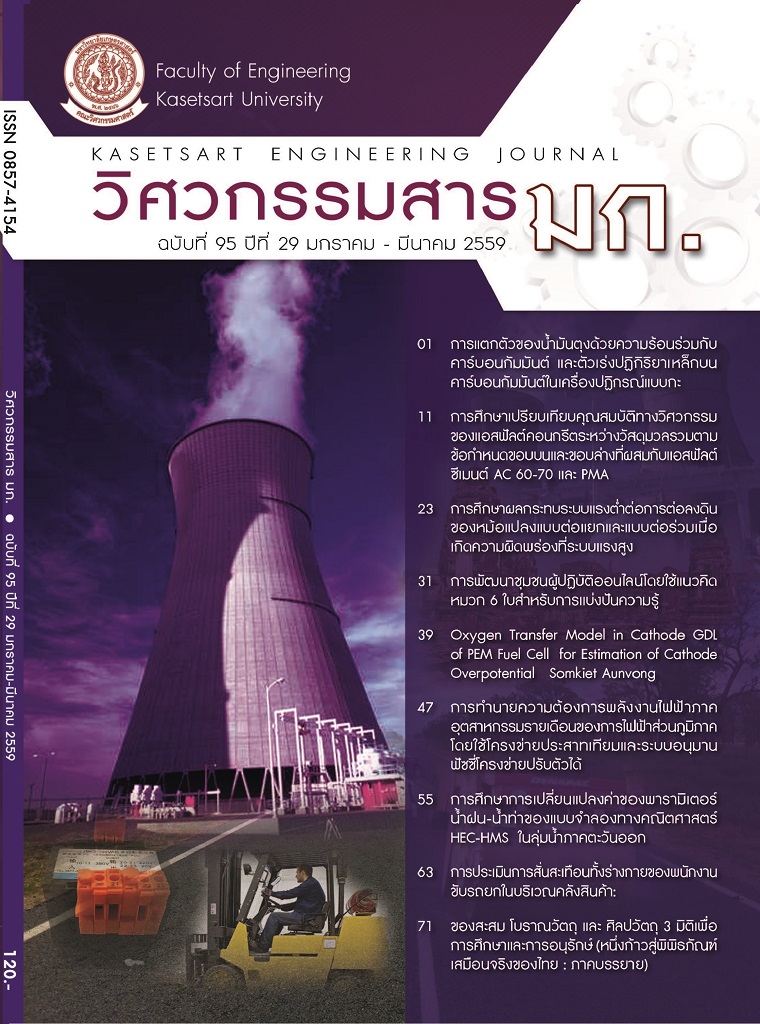ของสะสม โบราณวัตถุและ ศิลปวัตถุ 3 มิติเพื่อการศึกษาและการอนุรักษ์ (หนึ่งก้าวสู่พิพิธภัณฑ์เสมือนจริงของไทย : ภาคบรรยาย)
Keywords:
พิพิธภัณฑ์เสมือนจริง, ศิลปวัตถุ, โบราณวัตถุ, virtual museum, heritage artifact, antiqueAbstract
พิพิธภัณฑ์สถานในประเทศไทยเป็นที่จัดแสดงศิลปวัตถุโบราณที่เป็นมรดกเชิงวัฒนธรรมอันล้ำค่าที่เล่าเรื่องราวความเป็นมาของประเทศ พิพิธภัณฑ์บางแห่งแสดงของจริง บางแห่งแสดงเพียงวัตถุจำลอง บางแห่งใช้การแสดงภาพถ่ายไว้เท่านั้น ผู้สนใจเข้าชมถูกข้อจำกัดในการชม ห้ามจับหรือถ่ายรูป ได้เพียงแต่ยืนดู และอ่านคำอธิบายใต้ศิลปวัตถุหรือภาพถ่ายนั้น ทำให้ขาดอรรถรสในการชมศิลปวัตถุหรือโบราณวัตถุนั้นๆ การวิจัยครั้งนี้ได้พัฒนาโปรแกรมที่สามารถเก็บรวบรวมข้อมูลศิลปวัตถุโบราณประเภทต่างๆ ในรูปแบบ 3 มิติเสมือนจริง เริ่มจากทำการสแกนศิลปวัตถุ และใช้เทคนิคการลดแสงสะท้อนสำหรับการถ่ายภาพ รูปทรงของศิลปวัตถุจะถูกเก็บอยู่ในรูปสามเหลี่ยมเล็กๆ จำนวนมากเป็นไฟล์คอมพิวเตอร์ จากนั้นเขียนโปรแกรมคอมพิวเตอร์ให้สามารถอ่านข้อมูลรูปทรงที่เป็นสามเหลี่ยมเพื่อสร้างรูปทรง 3 มิติของศิลปวัตถุลงบนจอคอมพิวเตอร์ จากนั้นนำภาพที่ถ่ายได้มาตัดเป็นรูปสามเหลี่ยมที่ตรงกับสามเหลี่ยมบนรูปทรง 3 มิติ และนำมาวางซ้อนลงบนรูปทรงอีกครั้ง ซึ่งสร้างความพึงพอใจอย่างยิ่งแก่กลุ่มนักสะสมของเก่าโบราณ นอกจากนั้นยังเปลี่ยนพิพิธภัณฑ์แบบเดิมให้เป็นแหล่งเรียนรู้แบบใหม่ที่เพิ่มโอกาสในการเรียนรู้ศิลปวัตถุที่หาดูได้ยาก และสร้างความรู้สึกเสมือนชมของจริง สามารถศึกษาสำรวจ และสัมผัสอรรถรสในการชมศิลปวัตถุนั้นๆ ได้อย่างรอบด้านแบบ 360 องศา
Collectibles, Antiques and Heritage Artifacts in 3D for Education and Conservation (A Step toward Thailand Virtual Museum: Descriptive Part)
Thai National Museums are the places that conserve and display heritage artifacts and antiques, which are invaluable cultural inherited from the past generations. Those heritage artifacts can tell the history of the country. Some museums display the real artifacts but some do not. They might show the replicas or the pictures instead. Common rules and restrictions such as the artifacts cannot be touched and photographed are the obstacles for those who are really interested in the artifacts. The visitors can stare at the artifacts with some certain distances and read some descriptions underneath. The thrill and the appreciation of the visitors can be reasonably reduced. A computer program are developed in order to display the artifacts in the form of virtual 3D objects. Some sample artifacts are scanned and saved to computer format files containing millions of triangles so that the shapes of the artifacts can be reconstructed later on. The pictures of the artifacts at some angles are also captured in order to wrap around the virtual 3D artifact shapes by matching the triangles. Antique Collectors can be very pleased to see this virtual museum program. Moreover, the look of old museums are revolutionized to modern resources for rare heritage artifact studies. The visitors can feel like seeing the real objects because they can closely inspect and appreciate the heritage artifacts by rotating the objects around.


